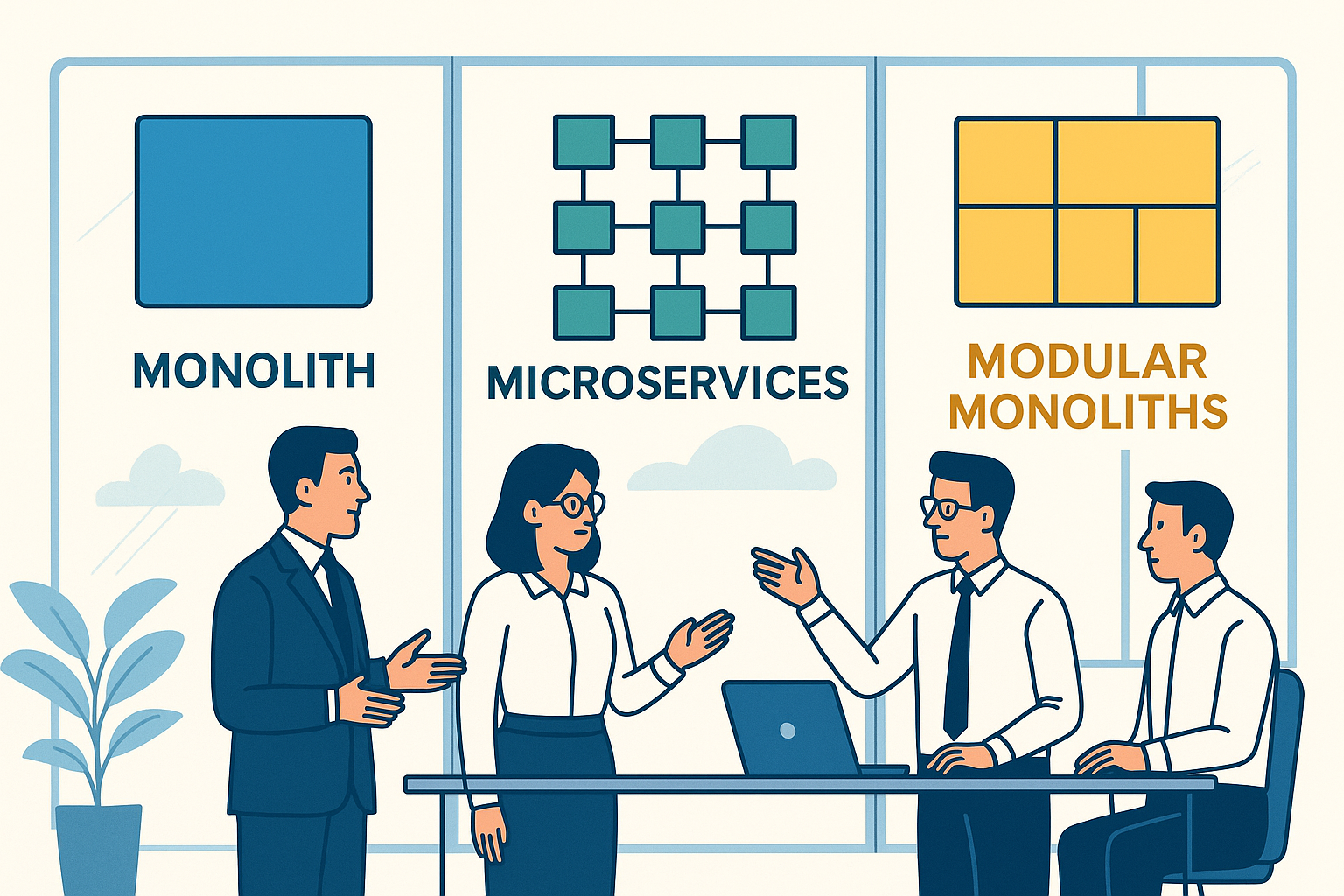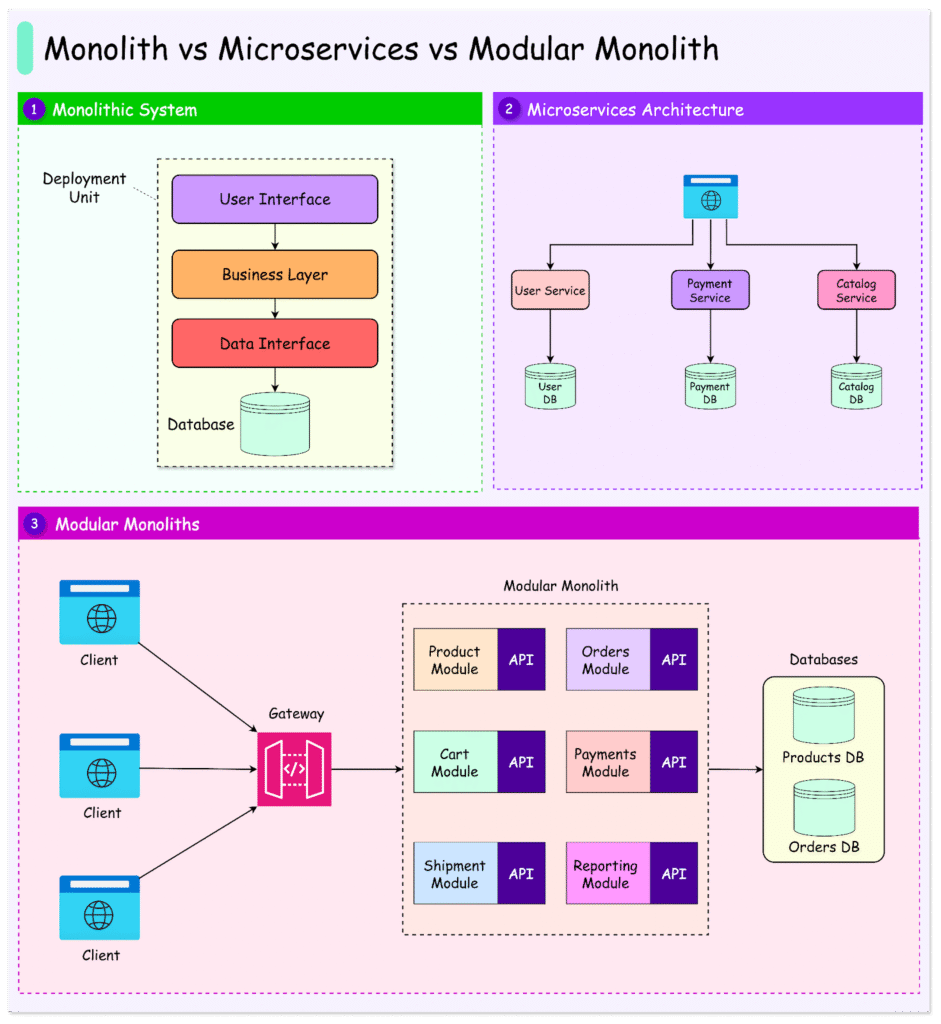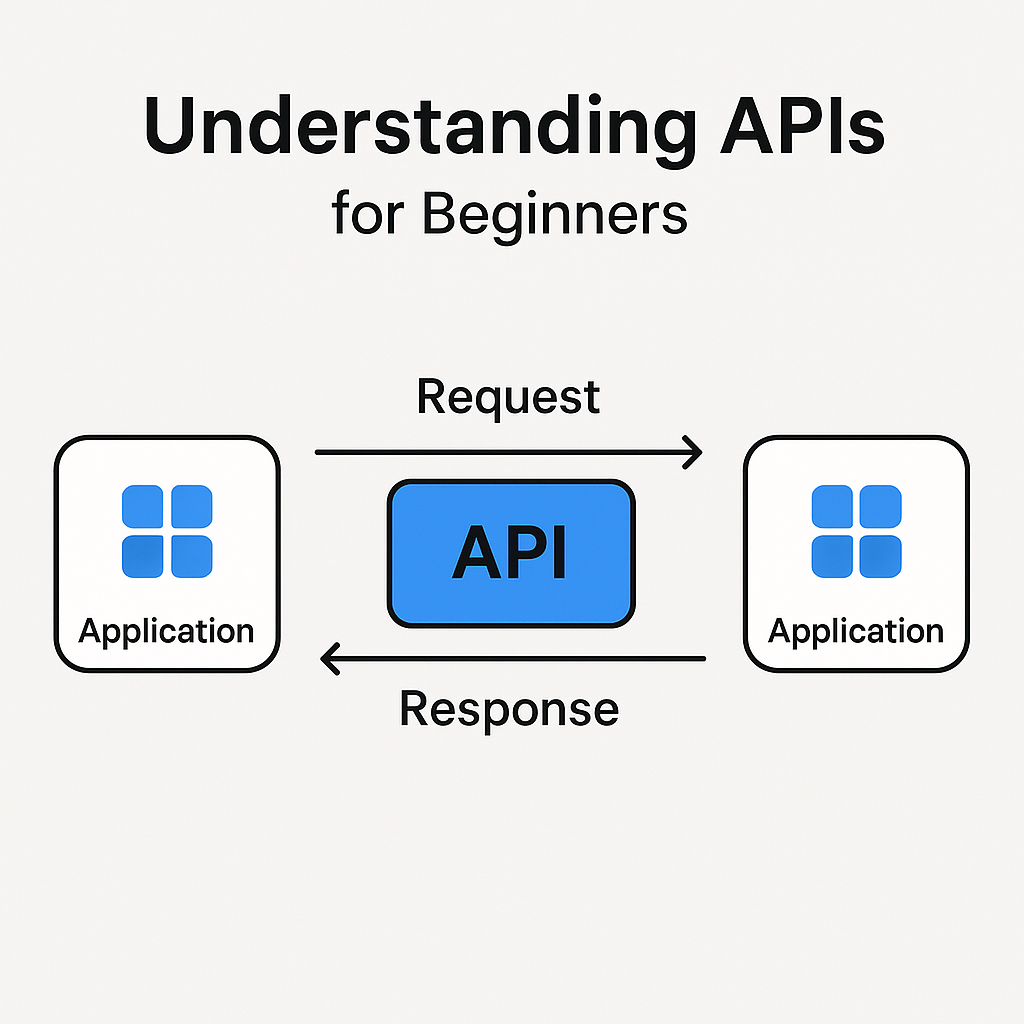Monolith vs Microservices vs Modular Monoliths Architecture

In today’s fast-paced digital world, software architecture is not just a technical choice—it’s a strategic foundation that shapes the future of an application. Whether you’re building a lightweight tool or a complex enterprise platform, the architecture you pick impacts your team’s productivity, the system’s performance, and the project’s ability to scale. You must have heard of Monolith vs Microservices vs Modular Architecture, well lets see it today.
Selecting the right architecture can mean the difference between rapid innovation and slow, tangled growth. Let’s dive deep into the three popular architectural styles: Monolith vs Microservices vs Modular Monoliths, and understand which path might be right for your project.
What Is a Monolith?
A Monolith is a single, unified codebase where all the application’s components—user interface, business logic, and data access—are interconnected and deployed together.
Advantages of Monolithic Architecture:
- 🚀 Simplicity: Easier to develop, test, and deploy, especially for small teams.
- 🛠 Less Overhead: Fewer network calls and integration issues compared to distributed systems.
- 💰 Cost-Effective: Great for startups and MVPs aiming for quick market entry.
Challenges of Monolithic Architecture:
- 🧱 Scalability Limits: Difficult to scale individual components independently.
- 🔄 Change Management: A small change can require rebuilding and redeploying the entire application.
- ⚠️ Tight Coupling: Over time, it can become a “big ball of mud,” making it hard to maintain and innovate.
When to Choose a Monolith:
- Early-stage startups
- Projects with clear and stable requirements
- Teams with limited resources

What Are Microservices?
Microservices break an application into small, independent services that communicate over APIs. Each service is responsible for a specific business function and can be developed, deployed, and scaled independently.
Advantages of Microservices Architecture:
- 📈 Independent Scalability: Scale only the components that need more resources.
- 💬 Flexibility: Different teams can build services using different languages and technologies.
- 🔥 Resilience: Failure of one service doesn’t crash the whole system.
- 🔄 Continuous Delivery: Enables frequent, faster releases with reduced risk.
Challenges of Microservices Architecture:
- 📡 Increased Complexity: Managing inter-service communication, data consistency, and monitoring is harder.
- 🧰 DevOps Heavy: Requires sophisticated CI/CD pipelines, service discovery, logging, and monitoring tools.
- 🏗 Distributed Systems Challenges: Handling network latency, fault tolerance, and message serialization.
When to Choose Microservices:
- Large, evolving systems with many teams
- Need for high availability and fault tolerance
- Systems requiring rapid scaling and flexibility
What Are Modular Monoliths?
A Modular Monolith combines the simplicity of a monolith with the separation of concerns typical of microservices. Here, the application remains a single deployable unit, but internally, it is divided into well-structured modules with strict boundaries.
Advantages of Modular Monolith Architecture:
- ⚡ Best of Both Worlds: Simple deployment with clean separation of concerns.
- 🛡 Better Maintainability: Code remains organized, readable, and easy to scale incrementally.
- 🔄 Evolution Path: Easier to evolve into full microservices later if needed.
Challenges of Modular Monolith Architecture:
- 🚧 Discipline Needed: Requires teams to respect modular boundaries without technical enforcement.
- 🏗 Potential for Slip: Without proper governance, modularity can deteriorate over time.
When to Choose a Modular Monolith:
- Medium to large applications aiming for scalability without immediate microservice complexity
- Teams growing towards distributed architecture gradually
- Projects needing a clear separation of domains but unified deployments
Choosing the Right Architecture
| Feature | Monolith | Microservices | Modular Monolith |
|---|---|---|---|
| Ease of Development | High | Medium | High |
| Scalability | Low | High | Medium |
| Deployment Complexity | Low | High | Low |
| Maintenance Over Time | Low | High | Medium-High |
| Initial Cost | Low | High | Low |
There’s no “one-size-fits-all” solution. Your decision should consider:
- Team size and skill set
- Business goals and timeline
- Expected system scale and complexity
- Tolerance for operational overhead
Final Thoughts
Choosing between Monolith vs Microservices vs Modular Monoliths depends largely on where your project is today and where you expect it to go. While monoliths can be the perfect starting point for quick launches, microservices shine when scaling becomes crucial. Meanwhile, modular monoliths offer a smart compromise, giving structure without overwhelming complexity.
By aligning your architecture with your business strategy, you’ll not just build software—you’ll build a system ready to grow and adapt to the future.
Read more🌐 about latest Tech updates on out Technology Category Section
Read our previous article on Travel Hacks: Unlock Secret Hacks to Slash Flight and Hotel Costs!
#SoftwareArchitecture #Microservices #Monolith #ModularMonolith #TechLeadership #DevOps #SoftwareDevelopment





